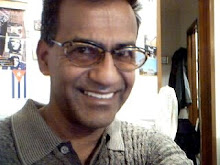Projecting the Future Diabetes Population
Size and Related Costs for the U.S.
In an article published in Diabetes Care, December 2009 Issue, the authors, none of whom are clinicians but number crunchers..concluded:
Between 2009 and 2034, the number of people with diagnosed and undiagnosed
diabetes will increase from 23.7 million to 44.1 million. The obesity distribution in the
population without diabetes will remain stable over time with 65% of individuals of the
population being overweight or obese.
Two things are very clear from these conclusions: eventhough the authors may not think it politically correct to mention it.
1. the current strategies of prevention and treatment have FAILED. not only the care of diabetes any better in preventing complications, the current group of professionals are not very good at preventing Diabetes.
2. as it has been shown year after year, no strategy is proven successful to turn around the rising tide of overweight and obesity. The current strategies most of them are thought at ivory towers of the universities and implemented at grass roots level, are not working. Some of the strategies born at the grass root levels are working, such as the Mo Po Tsyo in Phnom Penh in Cambodia.
But we are repeatedely bombarded with newer and more powerful medications for Type 2 DM.. if you are in the field long enough you would know that much of the newer mediations dont work as people had hoped for.
What is missing is the input from the people affected, whether they are individuals or communities and listening to them. Prescribing medications to people who cannot afford them, talking nutrition to patients who have no access to good food is at the bottom of a big pyramid of barriers.
Instead of telling patients or even ordering them: you should do it.. perhaps we might ask them, what can you do ?
if diabetes and obesity is increasing at this rate, despite all the money poured into its prevention and treatment, the situation may seem hopeless so perhaps a change in the personnel involved or the type of personnel involved need to be changed. Perhaps to scrutinize the roles of the professionals a little bit more, especially those licenced to practice and prescribe without much understanding of the society and environment and give power to people who are suffering from this disease, to communities affected globally and left powerless to do any thing about it..
I will never forget a meeting at a remote corner of south Dakota in the USA at an Indian Reservation, at a community meeting to tackle Diabetes, the epidemiologists and other beauracrats of the Indian Health Service were astounded to hear the elders expressing their solution to this Diabetes Epidemic:
Give us all jobs and you will see how quickly Diabetes is taken care of..
Someone ought to listen to the wisdom of the Elderly Lakotas!
skip to main |
skip to sidebar

Total Pageviews
Search This Blog
Feedjit
Followers
Blog Archive
-
▼
2009
(39)
-
▼
November
(8)
- Lakota advice for Diabetes
- Humility is Important for Diabetes Self Management
- The Culture of Poverty and its revenge
- Diabetes drug Byetta tied to kidney problems, says...
- American Indians, Insulin Levels and Fabricated Foods
- What about Aspirin?
- A subject close to my heart.. Environmental factor...
- From BBC.. Processed Food and Depression
-
▼
November
(8)
About Me

- MD Endocrinology MSc Medical Anthropology
- I am a well trained physician (Melbourne, Brisbane, London, Washington Univ; Miami) and a Medical Anthropologist (London and Havana). Well travelled and interested in the welfare of the indigenous peoples of the world